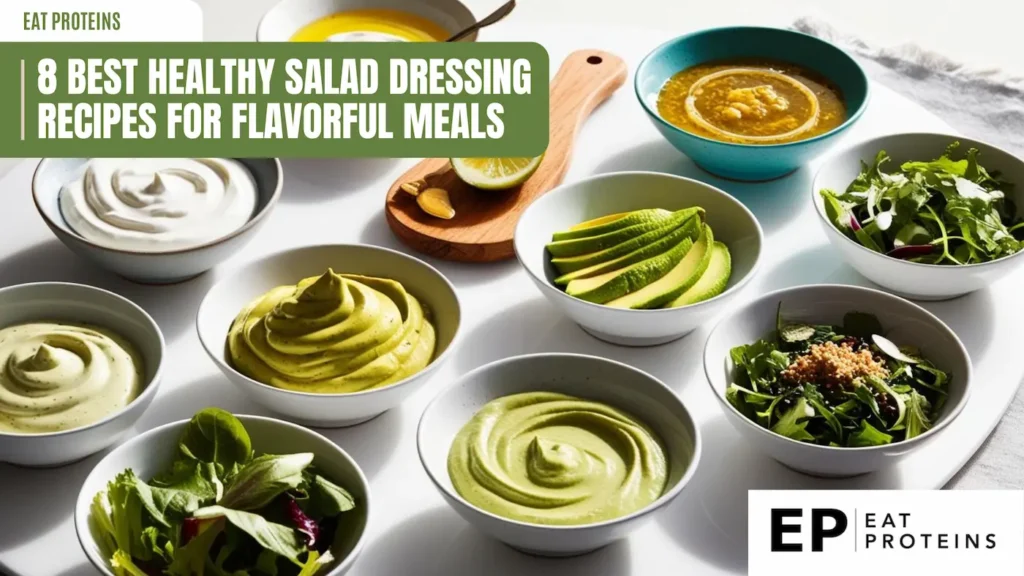
Eating salads can be a great way to boost my health, but the dressing I choose can make a big difference. Finding healthy salad dressing recipes allows me to enjoy tasty flavors without compromising nutrition. With so many options out there, it can be tough to know which ones are the best.
In this article, I will share some of my favorite recipes that add delicious taste to salads while keeping them light and healthy. These dressings can elevate any salad, making them more enjoyable and satisfying.
1. Greek Yogurt Lemon Dressing
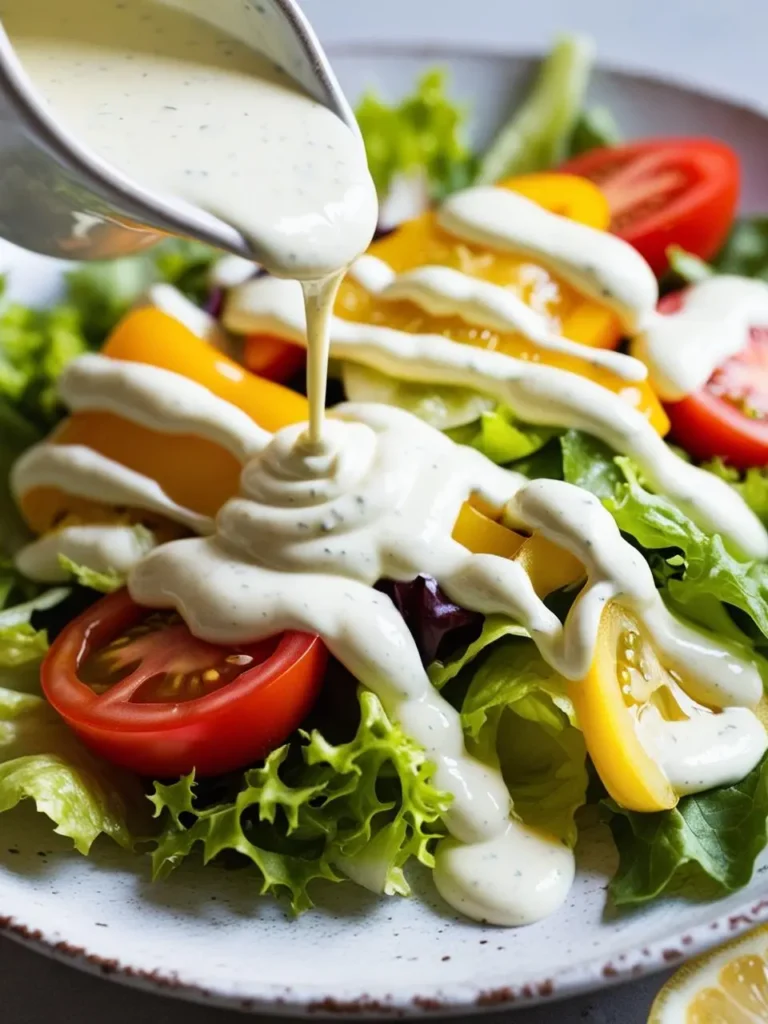
Greek yogurt lemon dressing is a creamy, tangy option that pairs well with many salads. It combines the rich texture of Greek yogurt with the bright flavor of lemon. This dressing is simple to make and adds a fresh taste to your dishes.
To make this dressing, I need just a few ingredients: Greek yogurt, lemon juice, olive oil, salt, and pepper.
Here are the steps to prepare it:
- In a bowl, I mix 1 cup of Greek yogurt with 2 tablespoons of fresh lemon juice.
- Next, I add 1 tablespoon of olive oil, along with salt and pepper to taste.
- I whisk everything together until the mixture is smooth and creamy.
This dressing can be stored in the refrigerator for up to a week. It’s perfect for salads, grilled vegetables, or as a dip. With its balance of creaminess and acidity, it elevates any meal.
2. Honey Mustard Vinaigrette

Honey mustard vinaigrette is a simple and tasty dressing. It combines the sweetness of honey with the tang of mustard, creating a balanced flavor for salads.
Making this vinaigrette is easy and quick. I usually whip it up in under 5 minutes. The ingredients are common and likely found in my kitchen.
To prepare, I follow these steps:
- In a small bowl, I mix 2 tablespoons of honey.
- I add 2 tablespoons of Dijon mustard to the bowl.
- Next, I whisk in 6 tablespoons of olive oil until it’s smooth.
- Finally, I add 1 tablespoon of apple cider vinegar for a little acidity.
I often season it with salt and pepper to taste. This dressing pairs well with mixed greens, grilled chicken, or roasted vegetables. It brings a nice twist to simple salads.
3. Avocado Lime Dressing
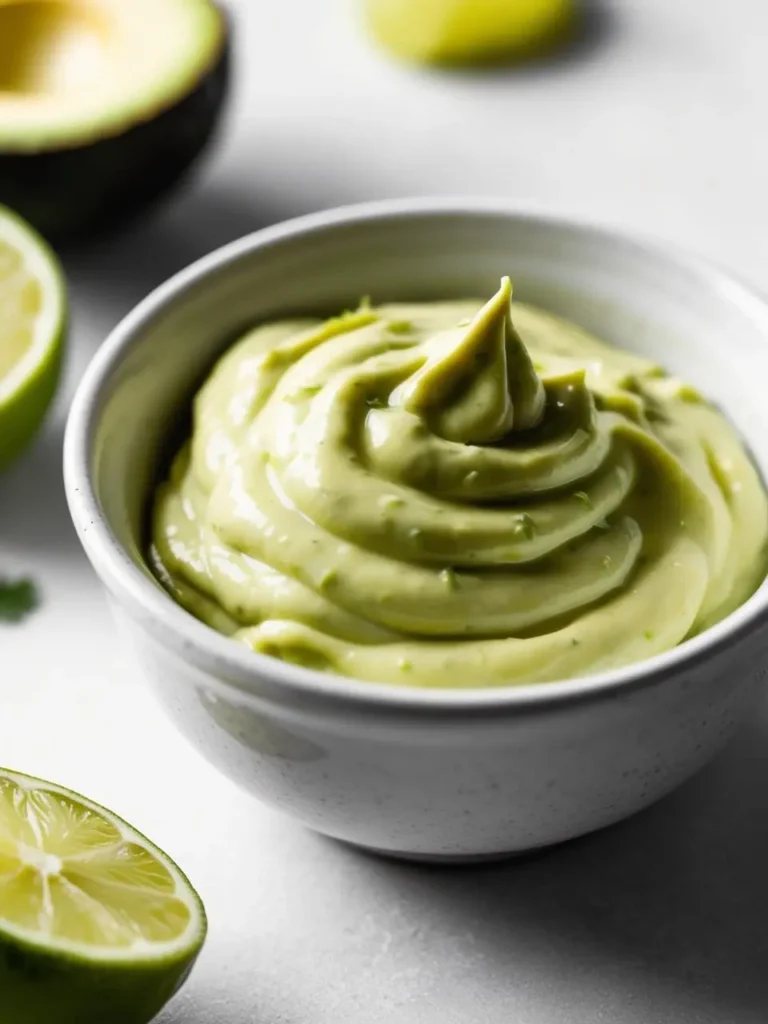
Avocado lime dressing is a creamy and flavorful option for salads. It combines the rich texture of avocado with the bright taste of lime, making it both delicious and nutritious.
I find it very easy to make this dressing at home. You only need a few simple ingredients.
Here are the steps I follow:
- Gather Ingredients: I use 1 ripe avocado, the juice of 1 lime, 2 tablespoons of olive oil, and a pinch of salt.
- Blend Together: In a blender, I add the avocado, lime juice, olive oil, and salt.
- Blend Until Smooth: I blend the mixture until it’s creamy and well combined. If it’s too thick, I add a little water to reach my desired consistency.
This dressing works well on green salads or as a dip for veggies. I enjoy its fresh taste and creamy texture.
4. Apple Cider Vinegar Dressing
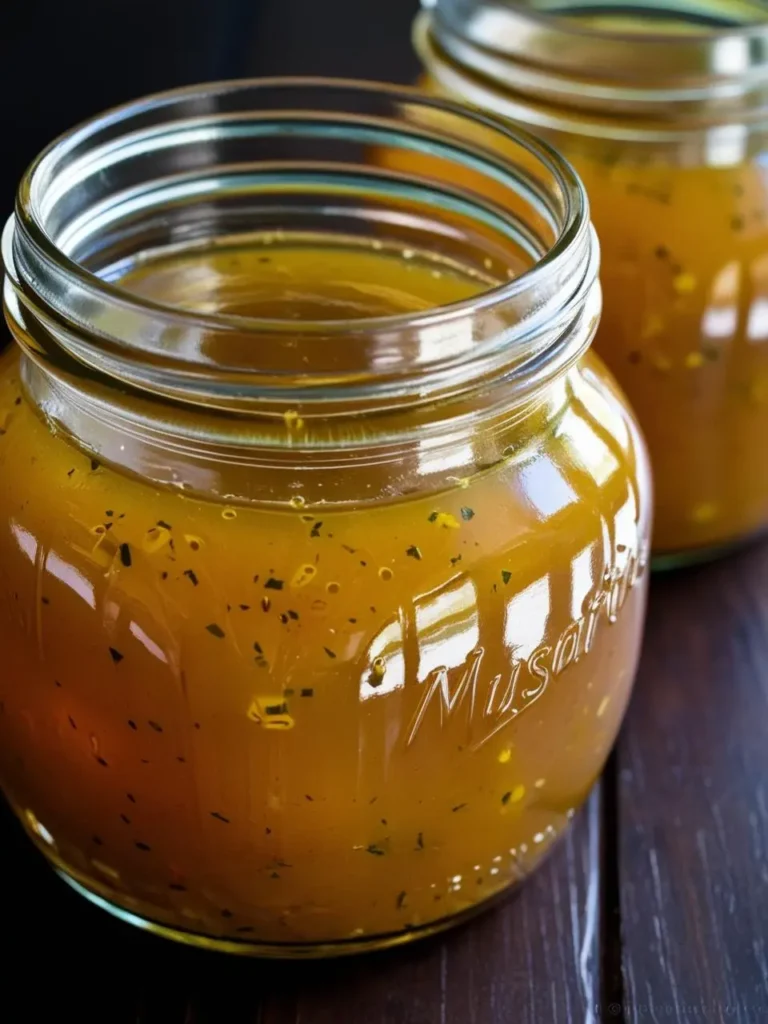
Apple cider vinegar dressing is a simple and tangy option that I enjoy on my salads. It is made primarily with apple cider vinegar, which adds a bright flavor. This dressing is also known for its potential health benefits.
Making this dressing is easy and takes just a few minutes. I usually mix ingredients in a jar for quick preparation. Here is how I do it:
- Gather Ingredients: I use 1/4 cup of apple cider vinegar, 1/2 cup of olive oil, 1 tablespoon of Dijon mustard, 1 tablespoon of honey or maple syrup, and salt and pepper to taste.
- Combine: In a jar, I add the apple cider vinegar, olive oil, Dijon mustard, and honey.
- Shake: I tightly close the jar and shake it well until all the ingredients are combined.
- Season: After shaking, I add salt and pepper to taste.
This dressing works well on mixed greens, vegetables, or even grains. I often store it in the refrigerator for up to a week, making it handy for quick meals.
5. Tahini Ginger Dressing
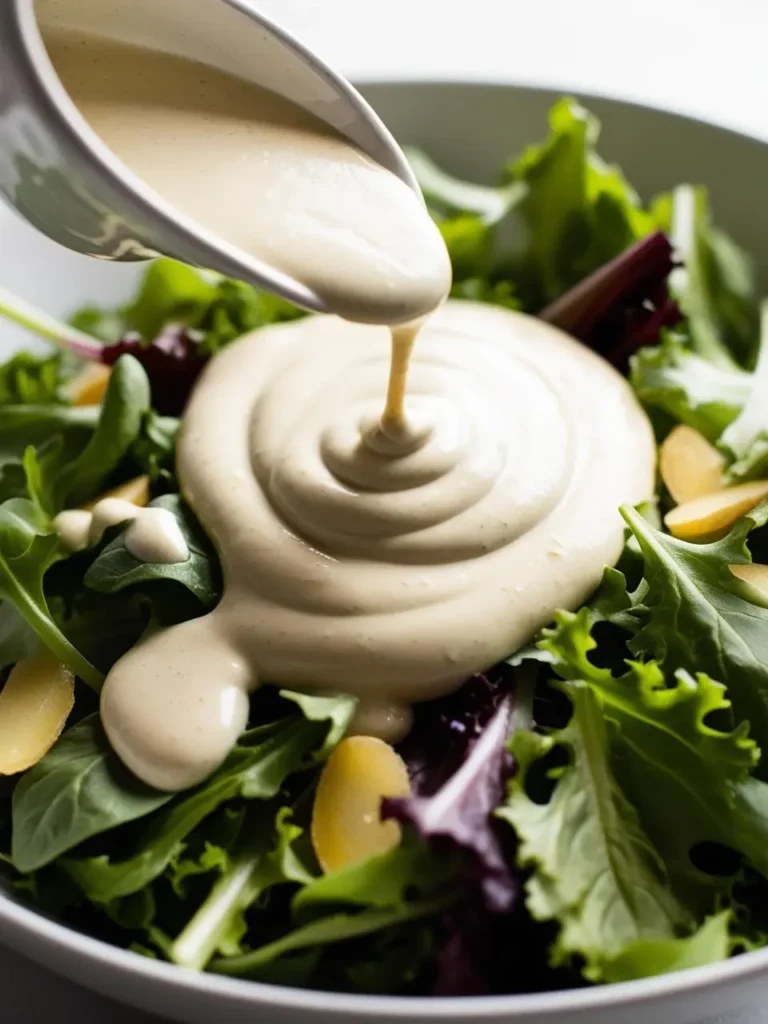
Tahini ginger dressing is a creamy and flavorful addition to salads. It’s made with tahini, which is ground sesame seeds, and ginger for a zesty kick. This dressing is not only delicious but also healthy.
I find this dressing easy to prepare. It takes just a few minutes to whisk together. Here’s how I make it in simple steps.
- Start with 1/4 cup of tahini in a bowl.
- Add 2 tablespoons of fresh lemon juice for acidity.
- Grate 1 teaspoon of fresh ginger and mix it in.
- Pour in 2 tablespoons of water to achieve the desired consistency.
- Season with salt to taste and stir until smooth.
This dressing works well on mixed greens or as a dip for vegetables. It’s a great way to add a nutty flavor and a bit of spice to my meals. Enjoy!
6. Creamy Cilantro Lime Dressing

Creamy cilantro lime dressing is a flavorful addition to salads. It combines the fresh taste of cilantro with zesty lime for a delicious kick. This dressing is easy to prepare and can elevate many dishes.
To make this dressing, I gather a few simple ingredients: fresh cilantro, lime juice, Greek yogurt, garlic, olive oil, honey, salt, and pepper. This blend gives the dressing its creamy texture and tangy flavor.
Here are the steps to make the dressing:
- In a blender or food processor, add 1 cup of fresh cilantro leaves.
- Squeeze in the juice of 2 limes.
- Add 1 cup of Greek yogurt and 1 clove of garlic.
- Pour in 1/4 cup of olive oil and 1 tablespoon of honey.
- Season with salt and pepper to taste.
- Blend until smooth and creamy.
I enjoy this dressing on mixed greens, tacos, or grilled chicken. It adds a bright and fresh flavor to any meal.
7. Miso Sesame Dressing
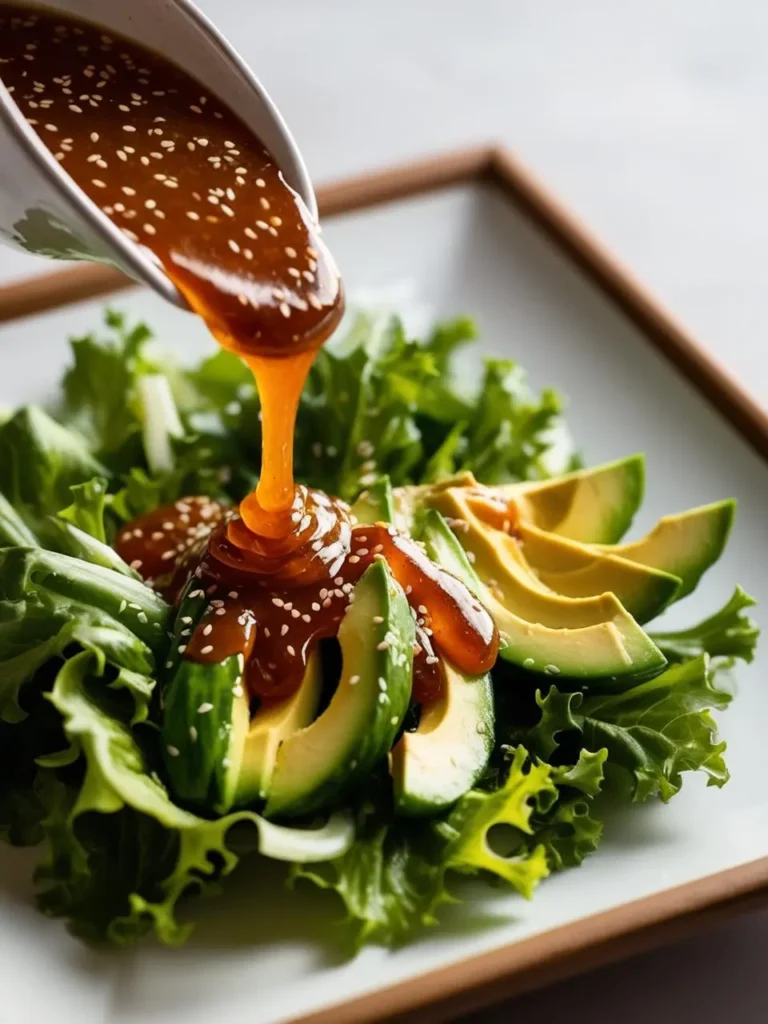
Miso sesame dressing is a flavorful option that combines the rich taste of miso with the nutty essence of sesame. Miso is a fermented soybean paste that adds depth and a savory touch to any salad.
I find it easy to make at home with simple ingredients. To prepare this dressing, I need the following:
- 2 tablespoons of miso paste
- 2 tablespoons of toasted sesame oil
- 1 tablespoon of rice vinegar
- 1 teaspoon of honey or maple syrup
- Water to thin, if needed
First, I mix the miso paste, sesame oil, rice vinegar, and honey in a small bowl. I whisk everything until the ingredients are well combined and smooth.
If the dressing is too thick, I add a little water, one teaspoon at a time, until I reach my desired consistency.
This dressing pairs nicely with a variety of salads, especially those that include greens, cucumbers, and avocado. It’s a nutritious and simple way to elevate my meals.
8. Basil Balsamic Vinaigrette
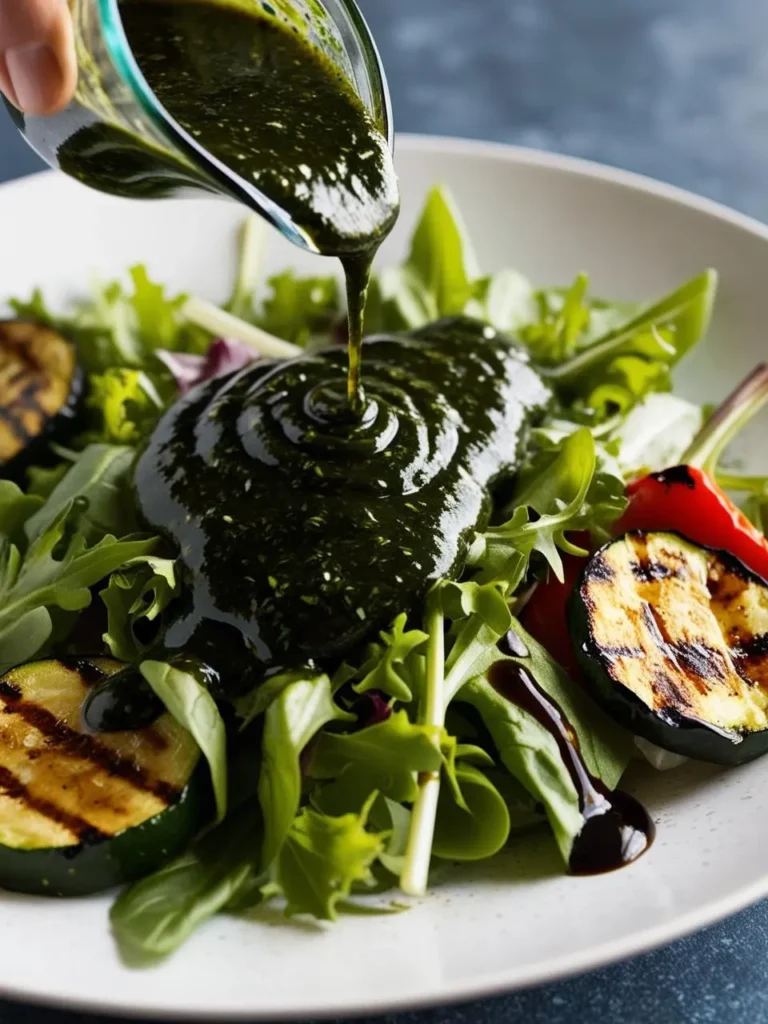
Basil balsamic vinaigrette is a flavorful dressing that combines fresh basil with balsamic vinegar. It adds a tangy and herbaceous touch to salads.
Making this vinaigrette is quite easy. I only need a few ingredients and a few minutes to prepare it.
Here are the simple steps to create this tasty dressing:
- Gather the ingredients: 1 cup of fresh basil leaves, 1/4 cup balsamic vinegar, 1/2 cup olive oil, 1 teaspoon garlic (minced), and salt and pepper to taste.
- In a blender, combine the basil leaves, balsamic vinegar, and minced garlic.
- Blend until smooth.
- Slowly add the olive oil while blending to emulsify the mixture.
- Season with salt and pepper to taste.
This dressing is perfect for drizzling over mixed greens or grilled vegetables. It helps brighten the flavors of any salad I make. Plus, it’s a great way to use fresh basil!
What Are the Health Benefits of Making Your Own Salad Dressing?

Making my own salad dressing offers many health benefits. By choosing the ingredients, I can create a dressing that fits my health goals while enhancing the taste of my salads.
How Does Making Your Own Salad Dressing Give You Control Over Ingredients?
When I make my own salad dressing, I have complete control over what goes into it. This means I can avoid additives, preservatives, and unhealthy fats often found in store-bought options.
For example, I can choose high-quality oils like olive oil, which is rich in healthy fats. Additionally, I can use natural sweeteners or fresh herbs to add flavor without extra calories.
Making my dressing allows me to select fresh, organic ingredients. This choice enhances nutrition and maximizes the health benefits in each meal. By avoiding hidden sugars and unhealthy substances, I can support my overall well-being effectively.
How Can You Customize Homemade Salad Dressing for Dietary Needs?
Creating my own salad dressing is also a way to customize it to suit my dietary needs. Whether I follow a low-carb, gluten-free, or vegan diet, I can tailor the recipe accordingly.
For instance, if I need a dairy-free option, I can use tahini or avocado for creaminess. If I am watching my sodium intake, I can limit added salt and incorporate spices and citrus for flavor.
This flexibility allows me to make dressings that suit my unique preferences and health requirements. By focusing on fresh ingredients and aligning them with my dietary goals, I can enjoy healthy and delicious salads every day.
What Are the Common Ingredients in Healthy Salad Dressings?
When creating healthy salad dressings, I focus on using wholesome ingredients that enhance flavor and nutrition. Below, I discuss three key categories: healthy fats, natural sweeteners, and fresh herbs and spices.
What Are the Best Healthy Fats for Salad Dressings?
In my salad dressings, I often include healthy fats, which are essential for flavor and absorption of fat-soluble vitamins. Common choices are:
- Olive Oil: Rich in monounsaturated fats and antioxidants, it adds a smooth texture and a fruity taste.
- Avocado Oil: This oil contains beneficial omega-9 fatty acids and has a high smoke point.
- Nut Butters: Almond or cashew butter can create a creamy consistency and provide protein.
These fats not only enhance the dressing but also help in the absorption of nutrients from the salad. I prefer using extra virgin options for their taste and health benefits.
What Natural Sweeteners Can Be Used in Salad Dressings?
To balance the flavors in my dressings, I often use natural sweeteners. These alternatives add a touch of sweetness without refined sugars. Some of my favorites include:
- Honey: A little goes a long way. I like its distinct flavor paired with vinegar.
- Maple Syrup: This offers a unique sweetness and works well in vinaigrettes.
- Agave Nectar: Less syrupy than honey, it blends easily into dressings.
I use these sweeteners sparingly to keep the dressing healthy while still ensuring it complements the veggies. Each option brings its own flavor profile, making the dressings more enjoyable.
How Do Fresh Herbs and Spices Enhance Salad Dressings?
Fresh herbs and spices play a crucial role in elevating the taste of my dressings. They add depth without adding calories or unhealthy ingredients. Popular choices include:
- Basil: It adds a sweet, peppery flavor perfect for Italian-style dressings.
- Cilantro: Its bright taste pairs well with lime and chili spices.
- Garlic and Onion Powder: These add a savory note that enhances any dressing.
I experiment with different combinations to find the right balance for my salads. Using fresh ingredients ensures my dressings are vibrant and full of flavor.
How Do You Store and Preserve Homemade Salad Dressings?
Proper storage is key to keeping homemade salad dressings fresh and safe to eat. I will share essential tips on refrigeration and shelf life that will help you enjoy your dressings longer.
What Are the Best Refrigeration Tips for Salad Dressings?
I always store homemade salad dressings in airtight containers to maintain freshness. Glass jars with tight lids work well for this purpose.
I make sure to label the containers with the date I made the dressing. This helps me keep track of how long it has been stored.
When refrigerating, most dressings should be kept at a temperature of 40°F (4°C) or lower. Dressing containing dairy, like creamy dressings, requires extra caution. They should be consumed within a week for safety.
For vinaigrettes that don’t contain perishable ingredients, they can last longer, usually up to two weeks. Regularly checking for any changes in smell or appearance is a good habit.
What Is the Shelf Life of Homemade Salad Dressings?
The shelf life of homemade salad dressings varies depending on their ingredients. I find that dressings made with fresh herbs and garlic generally last about a week in the refrigerator.
Oil-based dressings, such as vinaigrettes, tend to have a longer shelf life, often lasting two to four weeks.
I avoid adding preservatives to my homemade dressings, so understanding when to toss them is crucial. If I notice any off smells, mold, or separation that I can’t shake back together, I discard it.
For dressings like mayonnaise-based dips, I always aim to use them within five to seven days. Keeping track helps me enjoy fresh and safe dressings every time.
